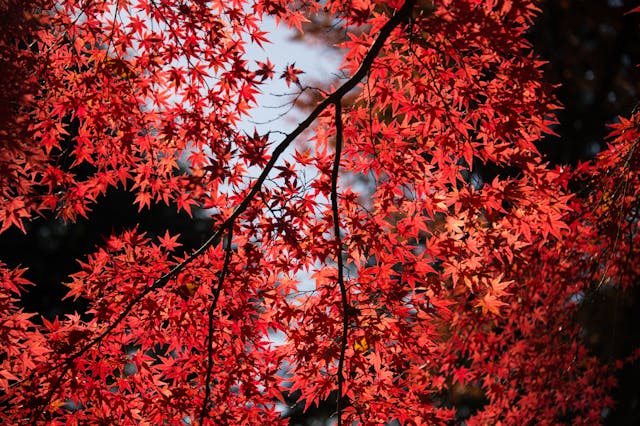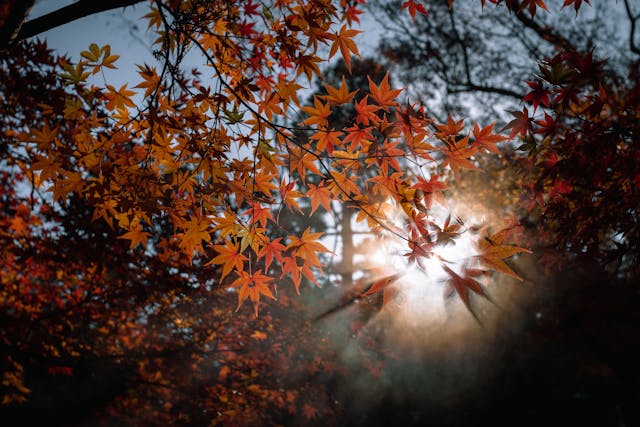Japanese maple trees (Acer palmatum) are admired for their striking foliage, elegant form, and adaptability in gardens. Known for their fast-growing nature in the right conditions, these trees add beauty and texture to any landscape. The Ultimate Guide to Growing Fast-Growing Japanese Maple Trees will help you understand how to grow a fast-growing Japanese maple, including planting tips, ideal conditions, and maintenance for healthy growth.
Understanding the Fast-Growing Japanese Maple Trees
Japanese maples typically grow at a moderate rate of about 12 inches per year. Depending on the variety, a mature tree can reach 10 to 25 feet in height, with most significant growth occurring in its early years.
To ensure rapid growth, provide an ideal environment with well-drained soil, adequate sunlight, and proper care. Although Japanese maples tolerate partial shade, they thrive best in a location with morning sunlight and afternoon shade, especially in hot climates.
Choosing the Right Location for Your Japanese Maple
When selecting a planting site, consider the following factors:
- Sunlight: Japanese maples prefer partial shade, particularly in regions with intense summer heat. Too much direct sunlight can cause leaf scorch.
- Soil: These trees thrive in moist, well-draining, slightly acidic soil. Avoid heavy clay or highly alkaline soil, as they can hinder growth.
- Protection from Wind: Strong winds can damage delicate branches and dry out leaves. Planting near a fence or larger trees can provide necessary shelter.
When to Plant Japanese Maple Trees
The best time to plant a Japanese maple is in the fall, allowing the roots to establish while the tree remains dormant. If planting in spring, ensure that the last frost has passed, as young trees are sensitive to cold temperatures.
How to Plant a Japanese Maple
- Dig a Hole: Make a hole three times the size of the root ball to encourage strong root development.
- Prepare the Soil: Mix in organic matter such as compost or well-rotted manure to improve soil structure.
- Position the Tree: Place the tree so that the top of the root ball is level with the soil surface.
- Backfill and Water: Fill the hole with soil, gently pressing around the base, and water thoroughly.
- Mulch for Moisture Retention: Apply a layer of mulch around the base to retain moisture and regulate soil temperature.

Best Japanese Maple Varieties for Fast Growth
Japanese maples come in various stunning varieties. Here are some of the best fast-growing types:
- Coral Bark (Acer palmatum ‘Sango Kaku’) – Reaches 20-25 feet with bright green leaves that turn golden yellow in fall.
- Crimson Queen (Acer palmatum dissectum ‘Crimson Queen’) – A compact variety (8-12 feet) with deeply lobed maroon foliage.
- Emperor One (Acer palmatum ‘Emperor One’) – A hardy tree growing up to 15 feet with deep maroon foliage turning fiery red in autumn.
- Green Cascade (Acer palmatum ‘Green Cascade’) – Grows 20-25 feet wide, featuring delicate, fern-like foliage that shifts to yellow and red in fall.
- Autumn Moon (Acer shirasawanum ‘Autumn Moon’) – Displays large, palm-shaped leaves that change from golden yellow to vibrant red.
- Red Dragon (Acer palmatum dissectum ‘Red Dragon’) – A compact variety (6-8 feet) with dramatic burgundy foliage turning bright red in fall.
Caring for Your Japanese Maple
1. Watering
- Newly planted trees need consistent watering during the first year.
- In hot climates, increase watering frequency, especially in dry weather.
- Check soil moisture by inserting a finger; if dry, water the tree.
2. Fertilization
- Apply a balanced slow-release fertilizer in early spring to support growth.
- Container-grown trees benefit from monthly feeding during the growing season.
- Avoid excessive fertilization, as it can lead to weak, leggy growth.
3. Pruning
- Minimal pruning is needed, but removing dead or crowded branches enhances air circulation.
- Prune in late summer or early fall to maintain shape and structure.
- Avoid heavy pruning, which may distort the natural beauty of the tree.
4. Mulching
- Apply a 2-3 inch layer of organic mulch around the base to retain moisture and suppress weeds.
- Keep mulch a few inches away from the trunk to prevent rot.
5. Protecting Against Pests & Diseases
Common pests include aphids, Japanese beetles, and scale insects. A strong spray of water or insecticidal soap can help control infestations.
Japanese maples are susceptible to verticillium wilt, canker, and anthracnose. Prevent fungal diseases by maintaining proper drainage and avoiding overwatering.
Growing Japanese Maples in Containers
If you have limited space, Japanese maples thrive in large containers. Follow these tips for success:
- Use a high-quality, well-draining potting mix.
- Choose a large container with drainage holes to prevent root rot.
- Water regularly, as potted trees dry out faster than ground-planted ones.
- Repot every few years to refresh the soil and promote healthy growth.
Japanese maples are a stunning addition to any garden or landscape. With the right care, proper planting techniques, and attention to their needs, you can enjoy their breathtaking foliage year-round. Whether grown in the ground or a container, these trees bring timeless beauty to any setting.
Have you planted a Japanese maple before? Share your experience and tips in the comments below at Sow Haven!

